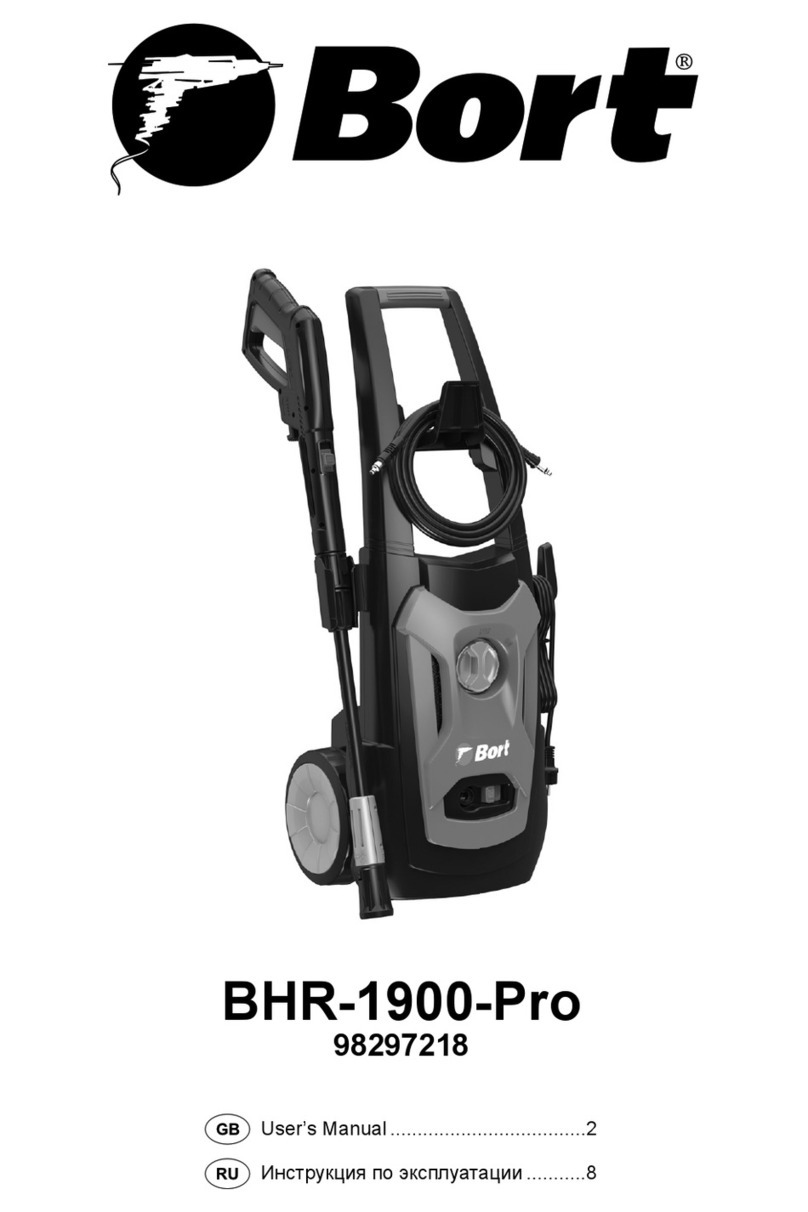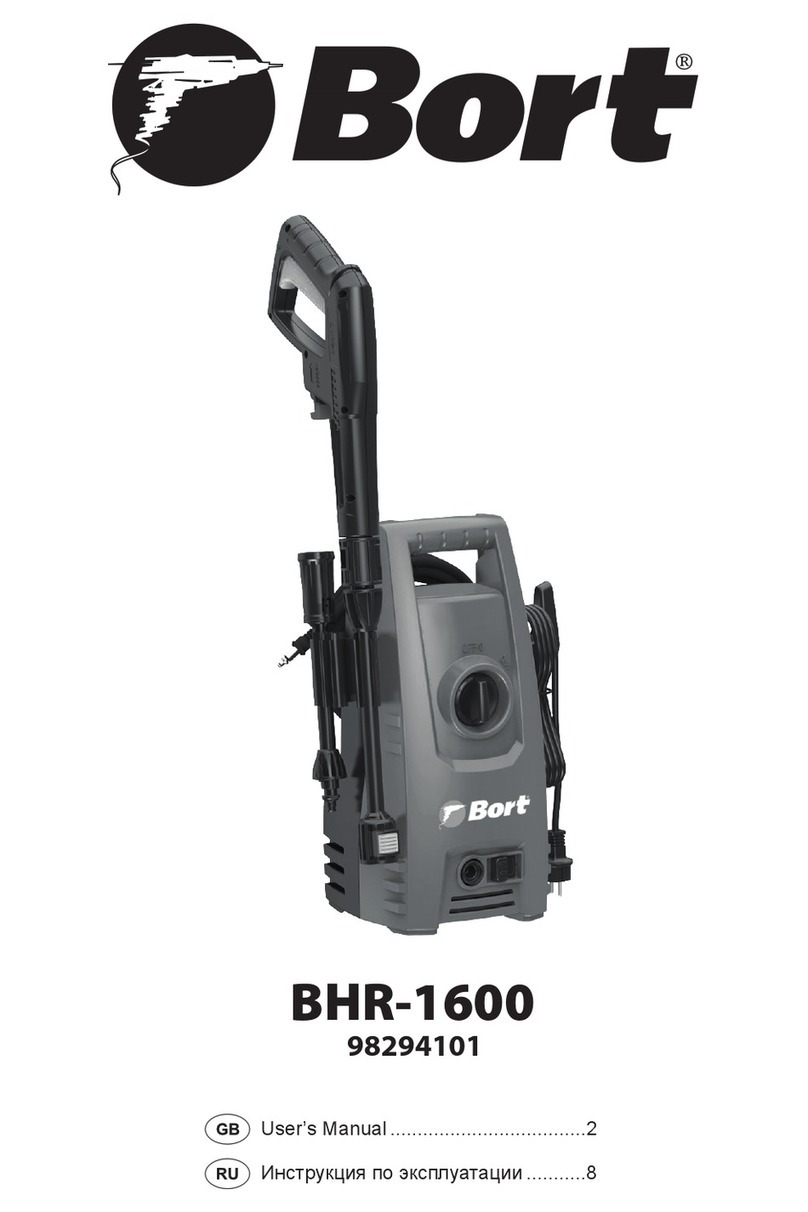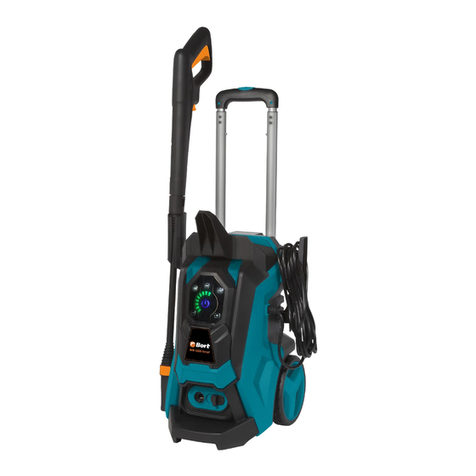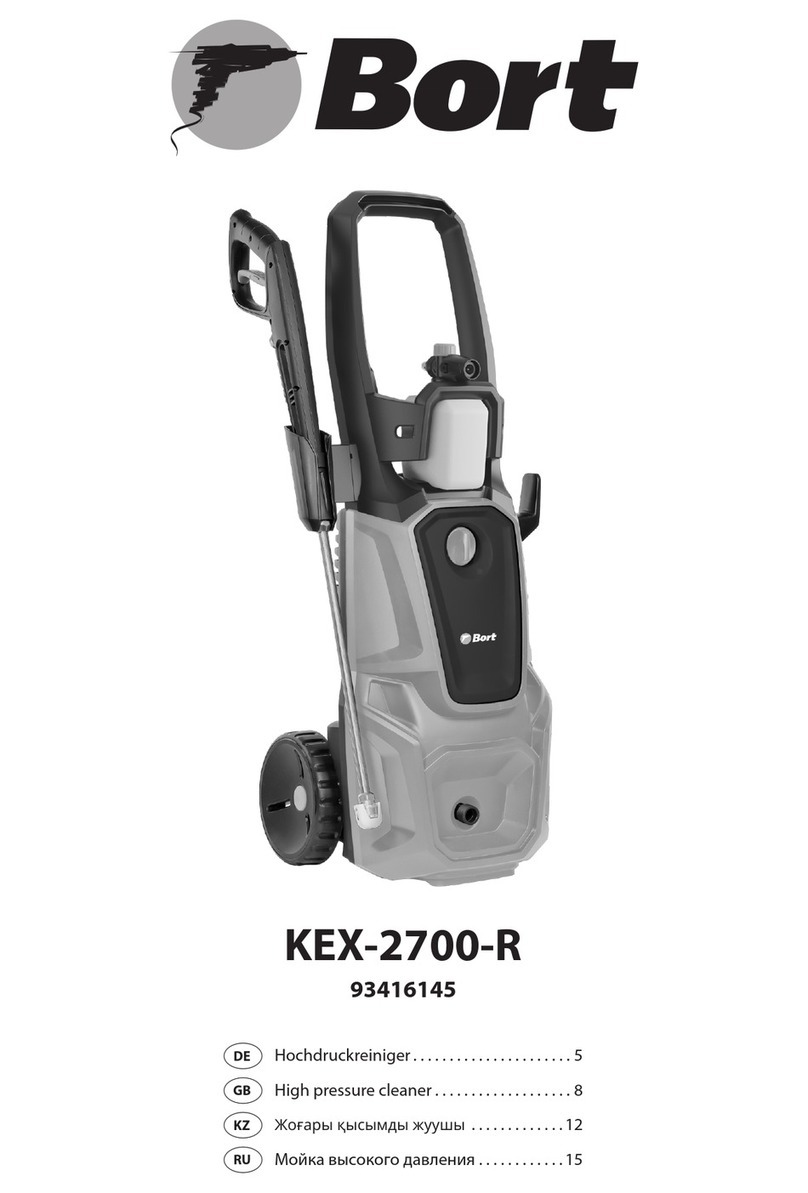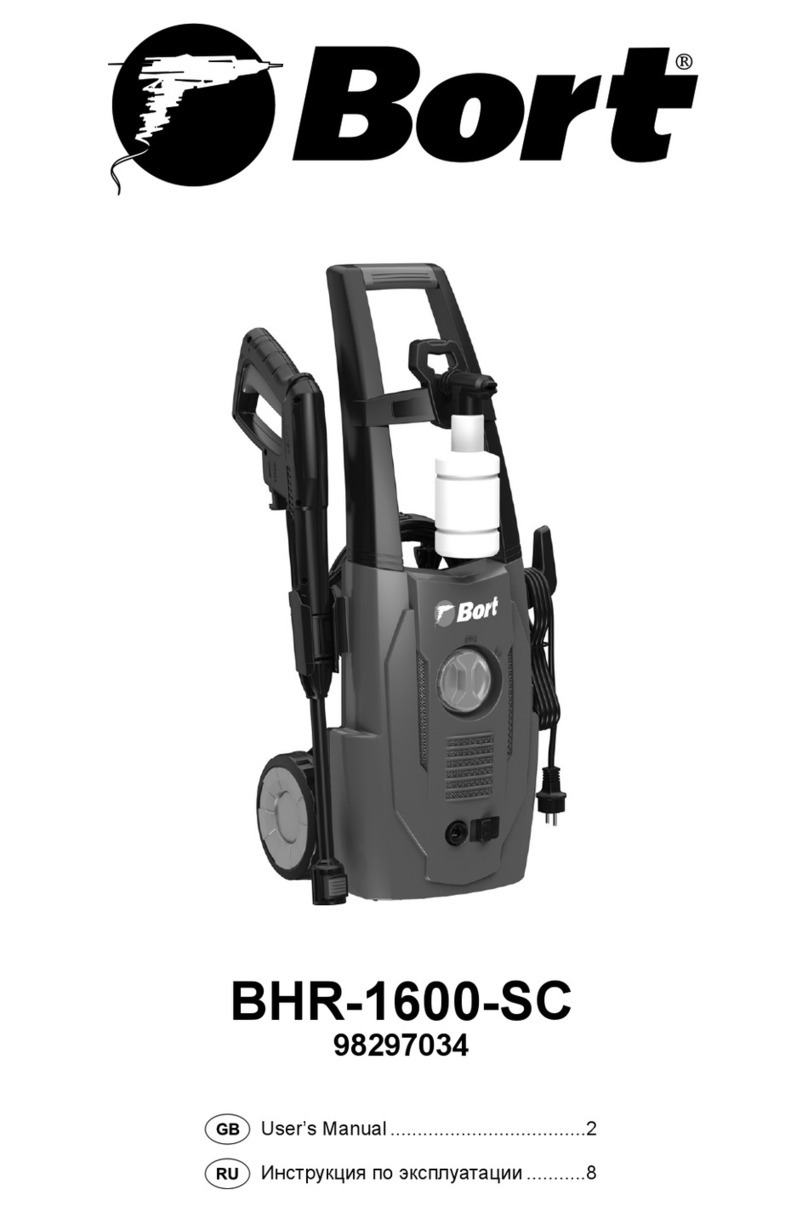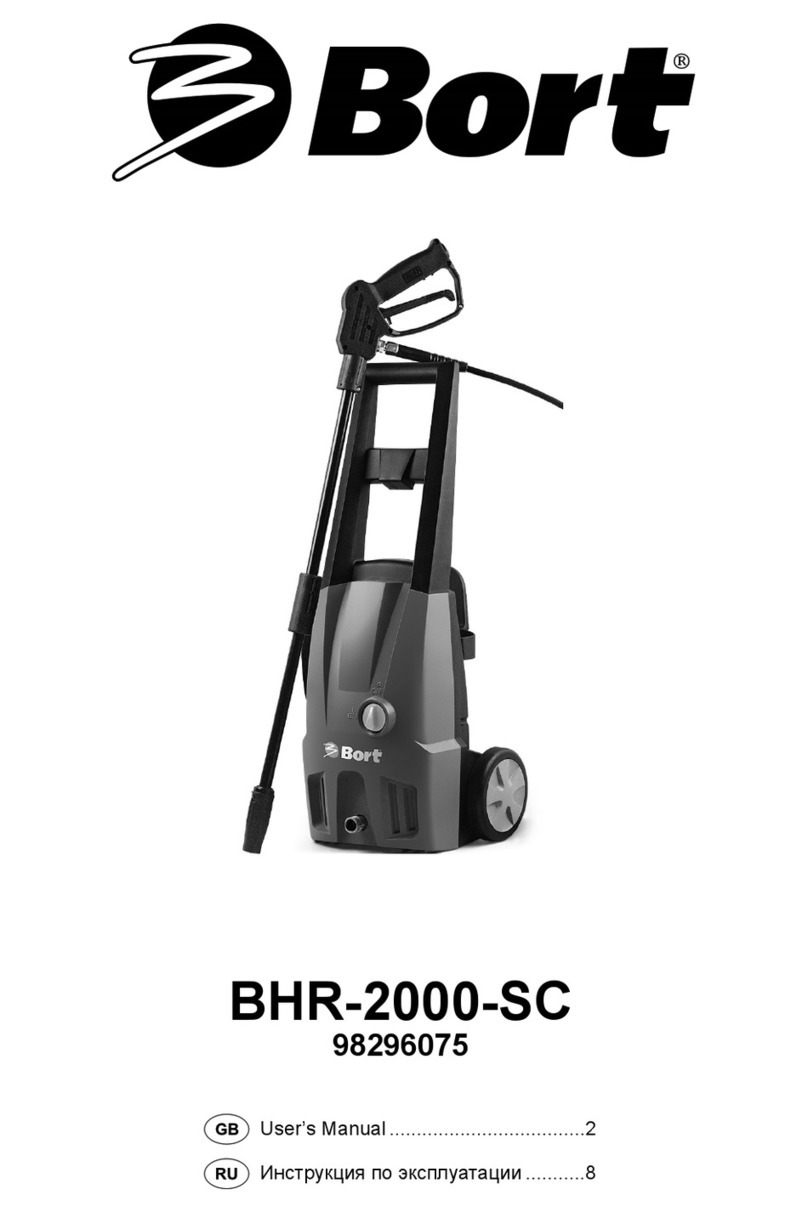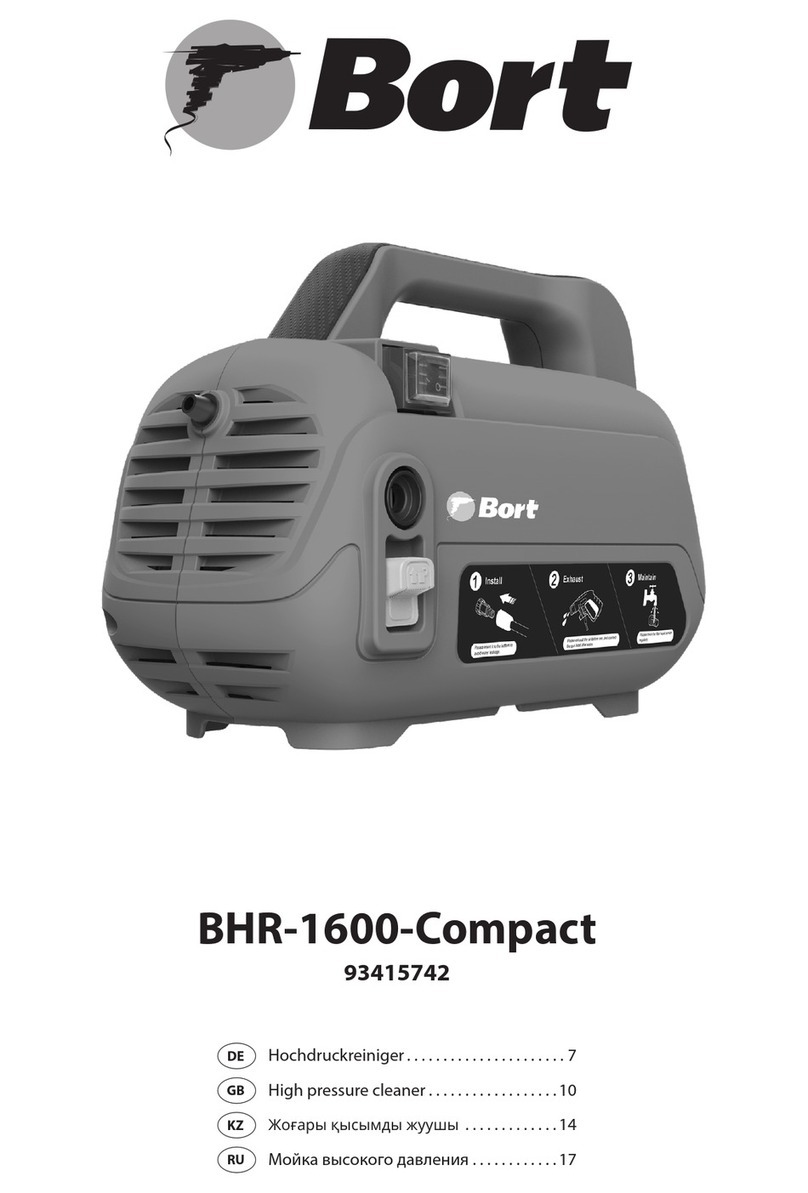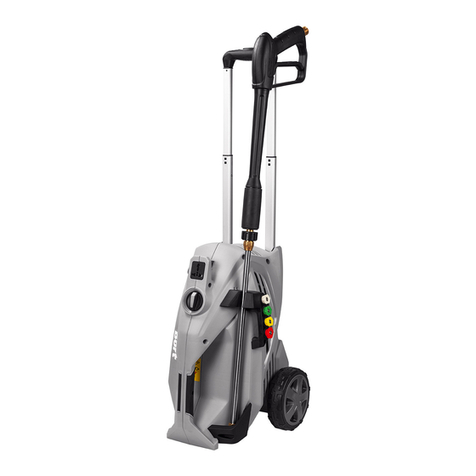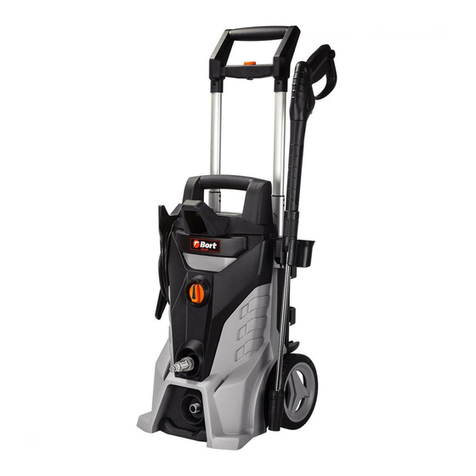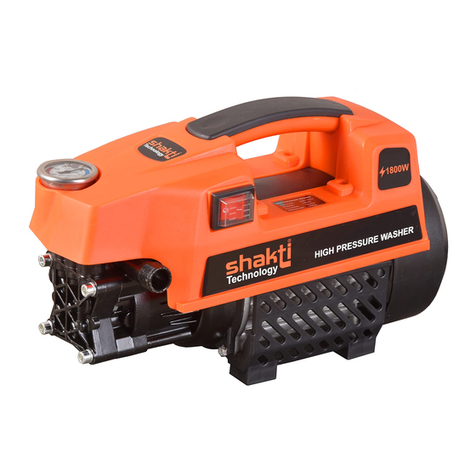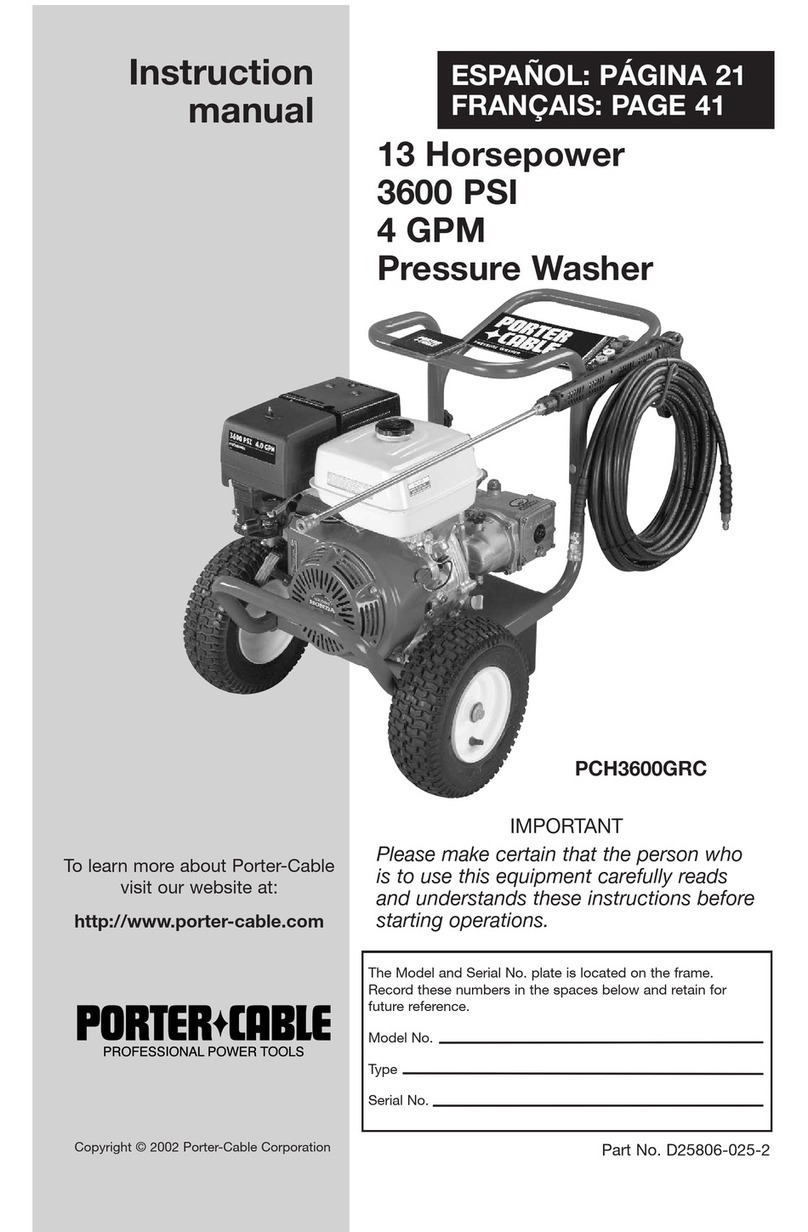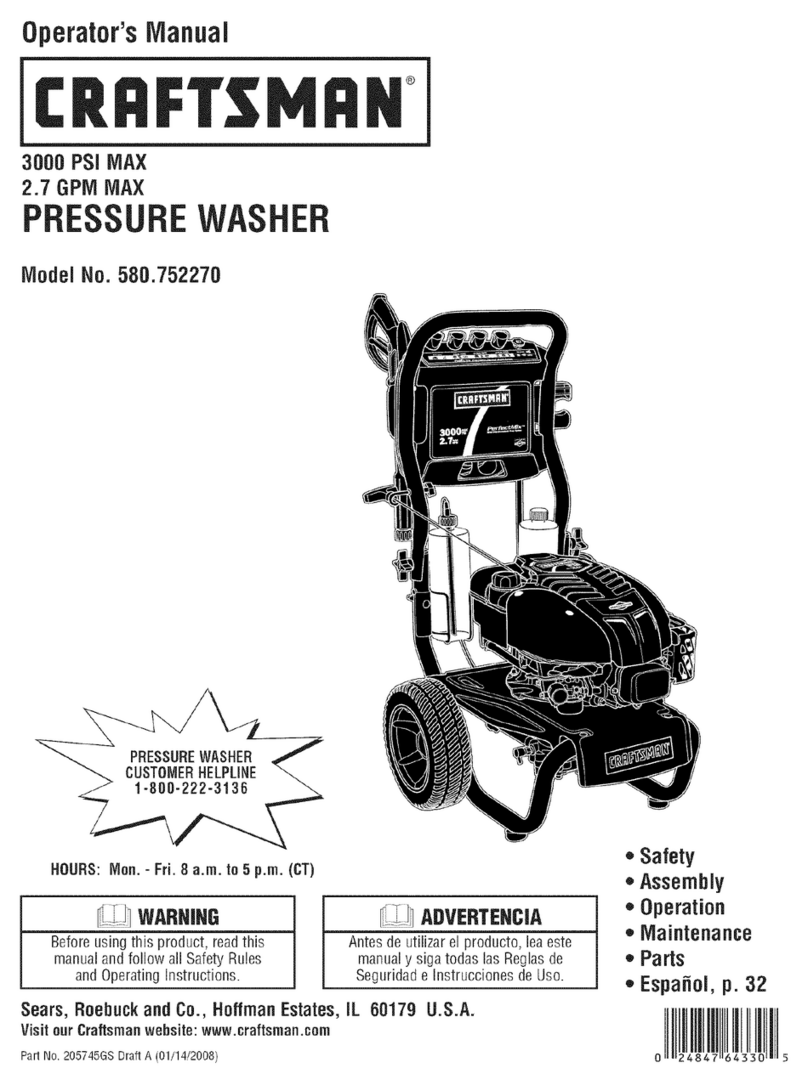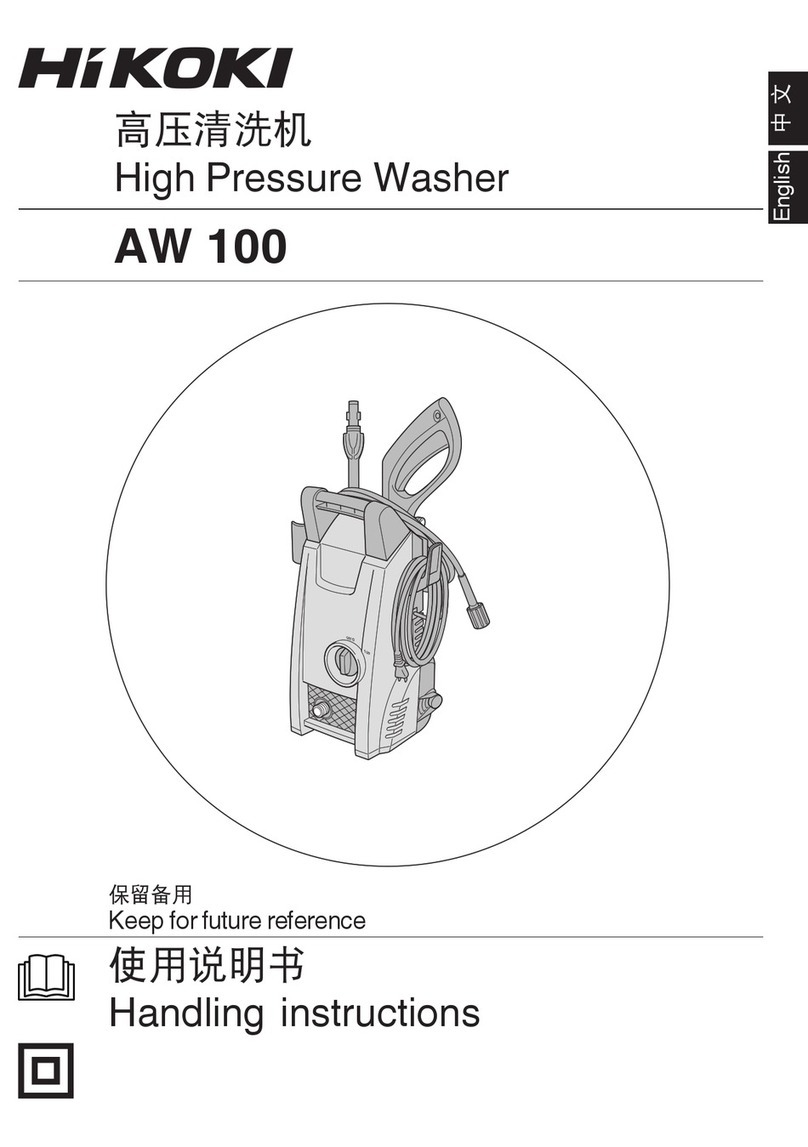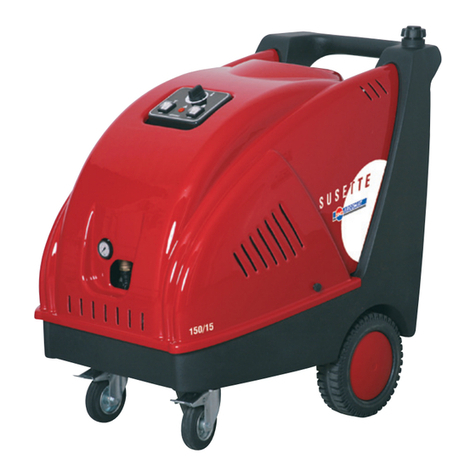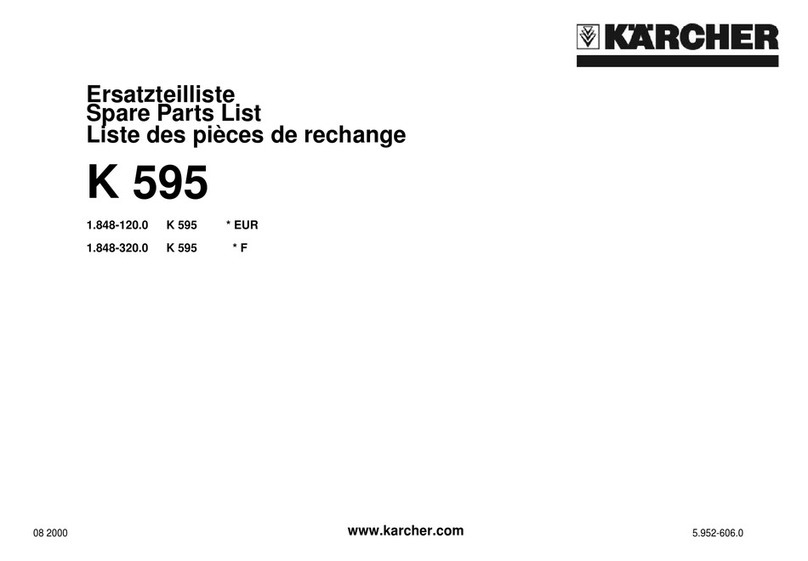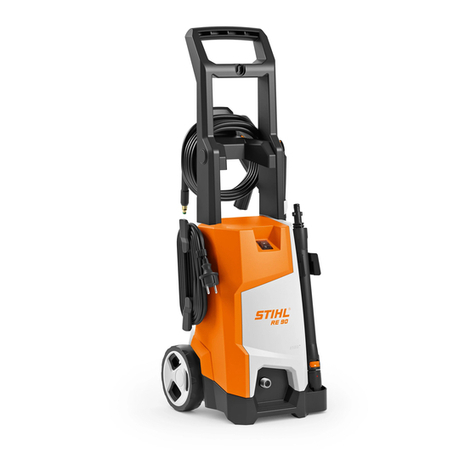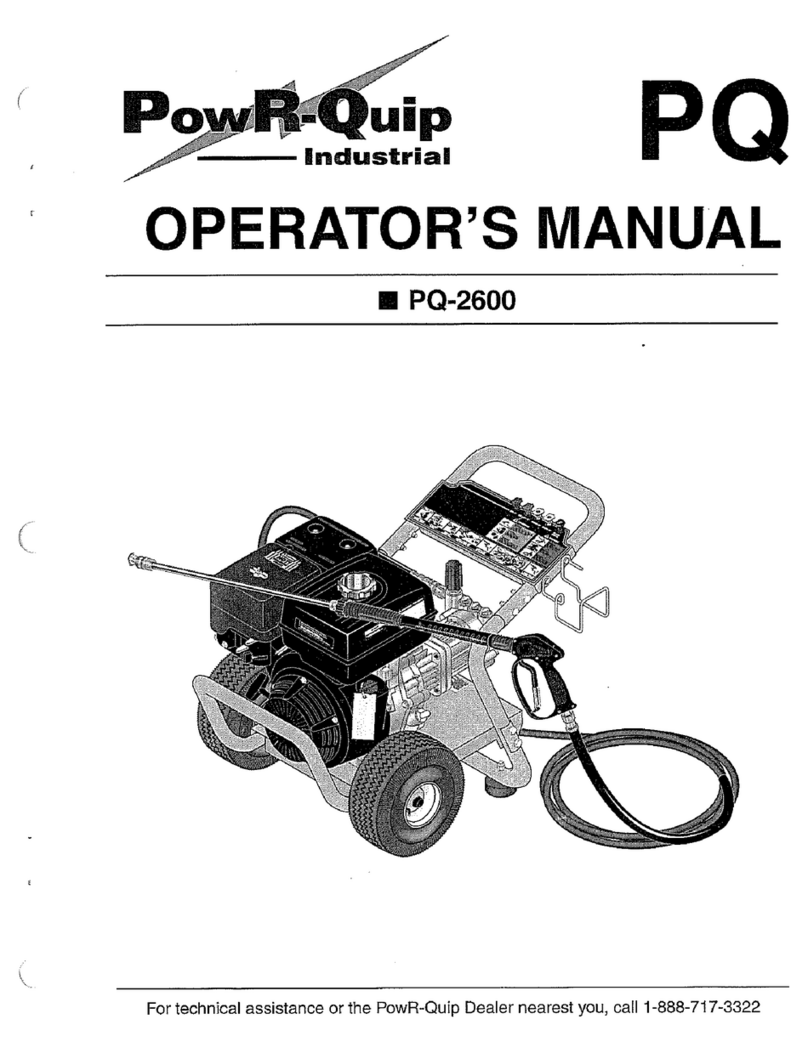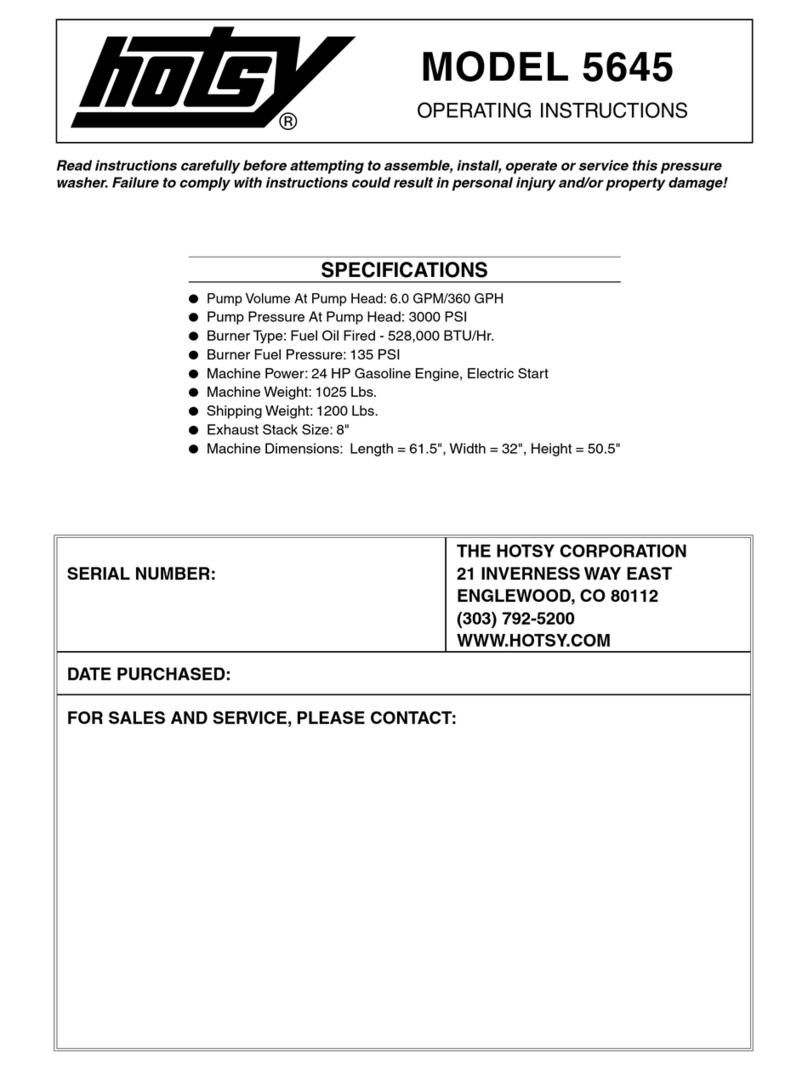
8
МОЙКА ВЫСОКОГО ДАВЛЕНИЯ
НАЗНАЧЕНИЕ
Данное устройство предназначено для быстрой и
эффективной мойки автомобилей, машин, лодок,
зданийит.д.сиспользованиемчистойводыихими-
ческихмоющихсредствдляудаленияустойчивыхза-
грязнений. Пользуясь химическими моющими сред-
ствами,применяйтетолькосредства,подверженные
биологическомуразложению.
Автомобильные двигатели промывайте только в ме-
стах,оборудованныхмаслоуловителями.
ТЕХНИЧЕСКИЕ ХАРАКТЕРИСТИКИ
Напряжение,В 220
Потребляемаямощность,Вт 2000
Максимальноедавление,бар 150
Рабочеедавление,бар 130
Максимальнаяпроизводительность 7,5л/мин
Функцияавтоматическоговсасывания +
Автостоп +
Шланг,м 8
Длинашнурапитания,м 5
Вес,кг 5,7
КОМПЛЕКТАЦИЯ:
Пистолет-распылитель
Напорныйшланг
ПРАВИЛА ТЕХНИКИ БЕЗОПАСНОСТИ
Во избежание возгорания, поражения электрическим
током и травм электрооборудование следует эксплу-
атировать в соответствии с требованиями данной ин-
струкции.
Электротехническая безопасность
● Перед включением следует убедиться, что напря-
жение в сети питания соответствует напряжению
электродвигателямойки.
● Пользуйтесь только влагозащищенным удлините-
лем. Не рекомендуется использовать чрезмерно
длинныеудлинители.Прииспользованииудлините-
лянакатушкеондолженбытьполностьюразмотан.
Площадьпоперечногосеченияпроводовудлинителя
должнабытьнеменее1,5мм2.
● Мойку необходимо подключать через устройство
защитногоотключения(макс.токутечки–30мА).
● Вынимаявилкуизрозетки,нетянитезашнурпитания.
● Воизбежаниекороткогозамыканияненаправляй-
теструюводынасамаппаратииноеэлектрообо-
рудование.Непользуйтесьмойкойвнепомещений
вдождливуюпогоду.
● Неприкасайтесьмокрымирукамиквилкеи(или)
розеткесетипитания.
Немедленно выключите мойку в случае:
1.Неисправностиилиповреждениявилкиилишнура
питания.
2.Поломкивыключателя.
3.Появлениядымаилизапахагорелойизоляции.
4.Поврежденияшлангавысокогодавления.
Перед началом работы:
● Убедитесьвтом,чтоводапоступаетвмойкудолж-
нымобразом.Эксплуатациямойкибезводыможет
привестикееповреждению.
● Проверьте надёжность всех соединений и отсут-
ствиеповреждённыхилиизношенныхдеталей.
Общие указания по безопасности
● Есливынаходитесьслишком далекоотпредмета,
которыйсобираетесьвымыть,неперемещайтеап-
парат путём перемещения его за шланг высокого
давления или за шнур питания; используйте для
этогоспециальнуюрукоятку.
● Длямоделей,неоснащённых«автостопом»,запре-
щено использование мойки в течение более чем
1-2минутпри закрытомпистолете,таккак этомо-
жетвывестиаппаратизстроя.
● Взимнихусловияххранитеаппаратвтепломместе.
● При работе аппарата вентиляционные отверстия
должныбытьоткрыты.
● Располагайтеаппараткакможноближекисточнику
водоснабжения.
● Используйтетолькотепринадлежностиизапасные
части, которые рекомендованы производителем.
Применениеоригинальных принадлежностейи за-
пасных частей обеспечит надежную и безопасную
работу.
● Устанавливайтемойкувустойчивомположении,на
ровнойповерхности.
● Не допускайте непреднамеренного нажатия на ку-
рокпистолета-распылителя.Непереноситемойкув
сбореспистолетом,держапалецнакурке.
● Для предотвращения случайного включения по
окончании работы с мойкой убедитесь, что курок
пистолетазаблокирован(рис.5).
● Воизбежаниевзрываилиотравлениязапрещается
использовать при работе с мойкой легковоспла-
меняющиеся или токсичные жидкости либо иные
средства, несовместимые с правильной работой
мойки.
● Ненаправляйтеструюводыналюдейиживотных:
это травмоопасно. Посторонние люди и животные
должнынаходитьсянарасстояниинеменее10ме-
тровотместаработы.
● Не доверяйте использование аппарата детям или
необученнымлицам.
● Не фиксируйте курок пистолета в положении
«Включено».
● Недопускаетсяизменятьоригинальныйдиаметррас-
пылительнойголовкифорсунки.
● Неоставляйтемойкубезприсмотра.
● Струя воды под большим давлением, попадая на
Изготовитель: BORT GLOBAL LIMITED
Room 1501, 15/F., SPA Centre, 53-55 Lockhart Road, WAN CHAI, Hong Kong
Тел/Факс +85 258 194 891
Уполномоченное изготовителем лицо: ООО «Дизайн-строй»
125222, г. Москва, Пенягинская ул., д. 18, т +7 (499) 700-10-34



